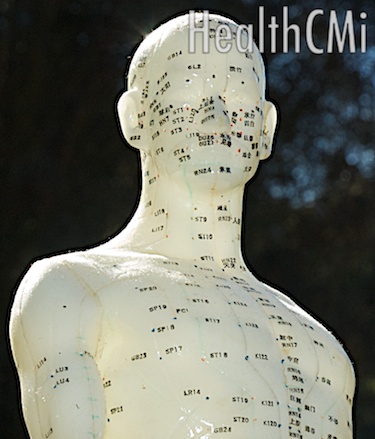Researchers have quantified mechanisms by which acupuncture exerts anti-inflammatory and pain reducing medical benefits. A new laboratory experiment proves that true electroacupuncture and not sham acupuncture causes biological reactions responsible for eliminating pain and inflammation.  Researchers discovered that acupuncture inhibits ERK1/2-COX-2 pathway activation and ERK1/2-CREB-NK-1 pathway activation. Let’s take a look at why these biochemical pathways are so vitally important to pain management.
Researchers discovered that acupuncture inhibits ERK1/2-COX-2 pathway activation and ERK1/2-CREB-NK-1 pathway activation. Let’s take a look at why these biochemical pathways are so vitally important to pain management.
COX-2 is an enzyme responsible for pain and inflammation. NK-1 is also an integral mediator of pain and inflammation in the central nervous system. Both NK-1 and COX-2 regulate sensitivity to pain. ERK1/2 is a signaling protein that regulates expression of both NK-1 and COX-2. In this study, electroacupuncture has been proven to regulate expression of both the ERK1/2-COX-2 and ERK1/2-CREB-NK-1 pathways thereby causing reductions in both pain and inflammation.
Application of acupuncture needles to acupuncture points effectively regulated the pain pathways of NK-1 and COX-2. Superficial sham acupuncture was also tested. Superficial sham acupuncture did not significantly regulate changes in the NK-1 and COX-2 pathways whereas the true acupuncture repeatedly and consistently regulated the pathways.
Electroacupuncture was applied to laboratory rats at acupuncture points ST36 (Zusanli) and BL60 (Kunlun). Electroacupuncture was applied at 2-100 Hz at an intensity of 1-2 mA. A HANS acupuncture point nerve stimulator device by Huawei Co., Ltd. was used to supply the ipsilateral electroacupuncture with a constant square wave. ST36 is located on the lower leg between the tibia and fibula. UB60 is located proximal to the lateral aspect of the ankle, lateral malleolus.
Immunohistochemistry using western blot, real-time PCR and electrophoretic mobility shift assay were used to measure the results in this acupuncture continuing education study. Electroacupuncture successfully regulated the pain and inflammation pathways of COX-2 and NK-1. As a result, the researchers note that the “present study shows EA (electroacupuncture) treatment might be a useful therapy for the treatment of inflammatory pain allodynia.” They add that electroacupuncture exerts an analgesic effect and that different biological pathways are activated at different time points. As a result, the researchers conclude that electroacupuncture stops pain through different mechanisms that include the post-translational inhibition of ERK1/2-COX-2 pathway activation and the transcriptional inhibition of ERK1/2-CREB-NK-1 pathway activation.

This research goes well beyond clinical issues of whether or not acupuncture stops pain. The research team successfully measured exact biological responses to acupuncture and the consequent reductions in pain and inflammation by use of specific acupuncture points. The researchers have identified exact biological pathways responsible for pain and inflammation reduction that are regulated by the application of acupuncture.
The Acupuncture Points
ST36 is located 3 cun below the lower border of the knee and is anterior to the crest of the tibia. ST36 (Zusanli) is translated as leg three measures and refers to it traditional ability to strengthen the body and allow patients to walk further. According to Traditional Chinese Medicine (TCM), ST36 is a He Sea point, earth point, sea of nourishment point and the lower He Sea of the Stomach. Indications for use of ST36 include leg pain, gastric pain, abdominal distention, fatigue, anemia, indigestion, breast abbesses, hemiplegia and mania.
BL60 is located in the depression between the lateral aspect of the ankle and the tendocalcaneous. UB60 is a Jing River point, fire point and, according to TCM, disperses wind and clears the channels. UB60 functions to relax the sinews and muscles and benefits the lower back. Indications for use include headaches, lower back pain, stiffness of the neck, ankle and heel pain and difficult labor and delivery.
Reference:
Fang, Jian-Qiao, Jun-Fan Fang, Yi Liang, and Jun-Ying Du. "Electroacupuncture Mediates Extracellular Signal-regulated Kinase 1/2 Pathways in the spinal cord of rats with inflammatory pain." BMC Complementary and Alternative Medicine 14, no. 1 (2014): 285.


